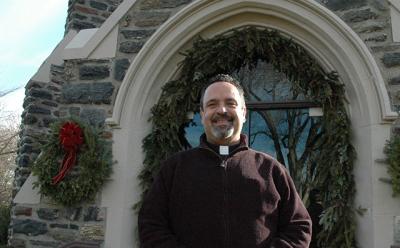Michael Kennedy, Lawyer and Advocate, Was 78
Michael Kennedy, Lawyer and Advocate, Was 78

John Michael Kennedy, a criminal trial lawyer who gained national attention representing Ivana Trump in her divorce from Donald Trump in the early 1990s, died at Memorial Sloan Kettering Hospital in Manhattan on Monday of cancer. He was 78.
Mr. Kennedy and his wife, the former Eleanora Baratelli, lived part of the year in Kilkare, an iconic oceanfront house in the Georgica Association that was a location in the movie “Wall Street” and dozens of promotional campaigns large and small. The Kennedys also lived in Manhattan.
Though the Trump divorce earned him notoriety, the case was a departure for Mr. Kennedy. His legal career began in civil litigation, chiefly personal injury suits, but, according to a 1991 profile in New York magazine, two years in the Army during the Vietnam War era changed his views.
In 1969 he opened a private practice in San Francisco, taking counterculture figures as clients. He successfully defended Huey Newton of the Black Panthers on manslaughter and murder charges in Oakland. In San Francisco, he won acquittal for seven Mexican-Americans charged with murdering a police officer in the Mission District.
He also represented Rennie Davis, a member of the Chicago Eight who was accused of conspiracy and inciting a riot during the 1968 Democratic National Convention, and he was Mr. Davis’s lawyer before the House Un-American Activities Committee. He represented Bernardine Dohrn, a member of the radical group the Weathermen. He represented the Brotherhood of Eternal Love, whose most famous member was Timothy Leary. In Nebraska Mr. Kennedy won acquittal for a Native American charged with assaulting federal agents at Wounded Knee. In another case, he won acquittal for six men accused of raising money to buy weapons for the Irish Republican Army.
Perhaps his most famous trial was known as the “Pizza Connection,” which centered on accusations of drug money laundering through pizza parlors in New York City.
When the United States attorney put two warring mafia families on trial, the case played out like a drama between the Capulets and the Montagues, with Mr. Kennedy retained as chief council representing one of the godfathers, the Sicilian mob boss Gaetano Badalamenti, Mr. Kennedy’s friend Joanie McDonnell said.
He also won clemency from New York Gov. Mario Cuomo for Jean Harris, the private girls’ school headmistress who was in prison for the murder of her lover, Herman Tarnower, the “Scarsdale Diet” doctor.
During the 1980s Mr. Kennedy and his wife hosted meetings in New York City between the Nicaraguan Sandinista leader Daniel Ortega and their influential friends. Mr. Kennedy was also special adviser to Miguel D’Escoto, who was the president of the United Nations General Assembly in 2008 and 2009.
He was born in Spokane, Wash., in 1937 and grew up in the San Joaquin Valley in Northern California. After boarding school in Washington State, he attended the University of California at Berkeley and the university’s Hastings College of Law in San Francisco. According to the 1991 New York magazine profile, Mr. Kennedy received basic training at Fort Benning, Ga., graduating second-to-last in his class. His first marriage ended in divorce.
In the 1970s the Kennedys began to spend summers in Sag Harbor. They bought the Georgica Association house in 1976, which was described at the time as having fallen into disrepair.
Mr. Kennedy’s flair for confrontation — Ms. McDonell said he possessed both a quick Irish wit and a quick Irish temper — frequently put him and government officials at odds.
In 1984, according to The East Hampton Star, he “sued every level of government from the United States down to East Hampton Village,” seeking the removal of the three ocean jetties at Georgica, which he believed were responsible for eroding the beach in front of his house. Over the years, charges flew in the opposite direction, as well, with the Town of East Hampton suing the Kennedys for building a protective revetment without necessary permits. Mr. Kennedy eventually prevailed in court.
Ms. McDonell said that Ms. Kennedy was her husband’s most trusted associate and confidant, working behind the scenes on every case and becoming an unofficial voir dire expert. The couple often signed personal correspondence, such as holiday cards and invitations, with their first names run together as Michaeleanore.
Although the Kennedys eschewed the label “socialite,” they could be seen often at benefits for Memorial Sloan Kettering Cancer Center, the Central Park Conservancy, and the United Nations. They gave as many parties as they attended and hosted book parties at Kilkare.
Besides his wife, he is survived by his daughters, Anna Safir of Manhattan and Wainscott and Lisa Kennedy of Healdsburg, Calif., and a son, Scott Hamilton Kennedy of Los Angeles. Three granddaughters and two grandsons also survive.
A funeral was held today at 10 a.m. at St. Paul the Apostle Catholic Church, 60th Street and Columbus Avenue in Manhattan.





